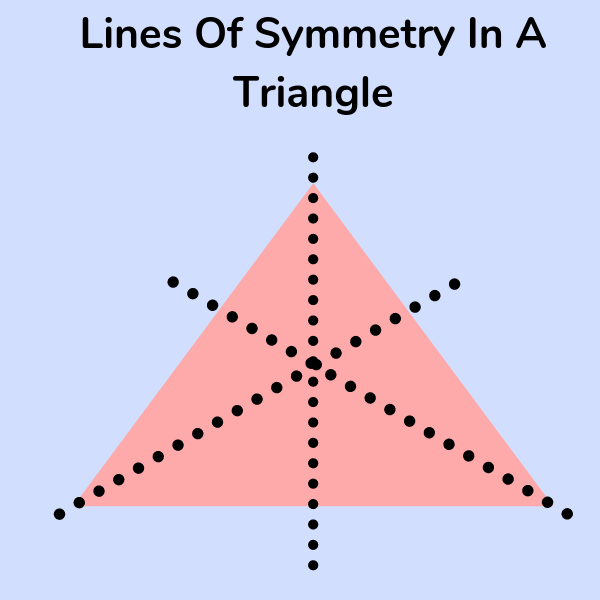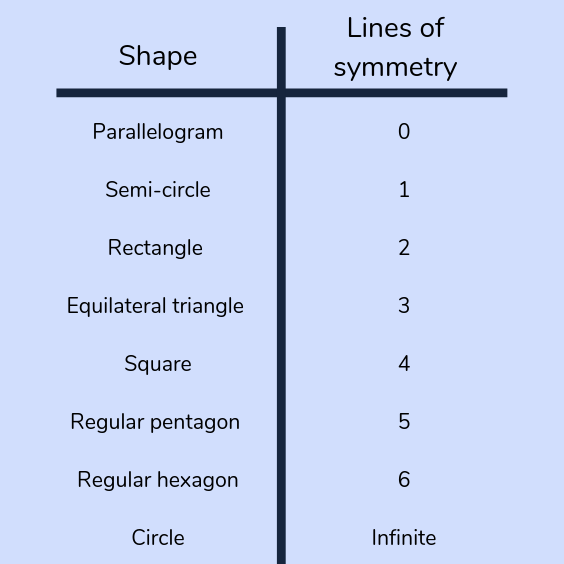What Is A Line Of Symmetry: Symmetrical Shapes Explained For Primary School
To help your child understand this part of the maths curriculum, this guide helps explain what a line of symmetry is and provides a few practice questions to test their skills.
This blog is part of our series of blogs designed for parents, teachers and carers supporting home learning and looking for home learning resources during the Covid-19 epidemic and beyond. But can be used for children of primary school age at any point of their journey into symmetry and mathematics.
What is a line of symmetry?
A line of symmetry is a line that cuts a shape exactly in half.
In symmetrical shapes, like a regular polygon, this means that if you were to fold the shape along the line of symmetry, both halves would match exactly and be mirror images of each other. If you were to place a mirror along this line, the shape would remain unchanged.
However, shapes and objects that do not have two identical halves when divided with a line of symmetry are called asymmetrical figures.

Lines of symmetry in different symmetrical shapes
Each shape has a different number of lines of symmetry, whether it’s a quadrilateral rhombus or parallelogram, a scalene triangle or isosceles triangle, your child should understand that each shape has different lines of symmetry. For example,
For example, a square has 4 lines of symmetry, as shown below.

While an equilateral triangle has 3 lines of symmetry.

FREE 2D Shapes With Symmetry Worksheet Year 3
Download this FREE recognising 2D shapes Geometry worksheet for Year 3 pupils, from our Independent Recap collection.
Download Free Now!Number Of Lines Of Symmetry
As well as having different numbers of lines that split the shape into identical parts, these lines can also be in different positions.
Each symmetrical shape also has a different axis of symmetry. For example, a heptagon has 7 angles each with a diagonal line of symmetry. While a hexagon has 1 horizontal line of symmetry, 1 vertical line of symmetry, and 4 diagonal lines of symmetry.
So there are different types of lines of symmetry depending on the shape.

When will my child learn about lines of symmetry in primary school?
Children are introduced to symmetry in Year 2, where they should be taught to identify and describe the properties of 2-D shapes, including the number of sides and line symmetry in a vertical line.
This is then developed in Year 4, where pupils will identify lines of symmetry in 2-D shapes presented in different orientations and complete a simple symmetric figure with respect to a specific line of symmetry.
The non-statutory guidance also recommends that children recognise line symmetry in a variety of diagrams, including where the line of symmetry does not dissect the original shape.
Line of symmetry examples and practice questions
To practice lines of reflection symmetry, you can draw an imaginary line or mirror line onto different shapes. Or you can use practice questions like:
1) Here is a shape on a grid. Complete the design so that it is symmetrical about the mirror line. Use a ruler.

2) These two shapes are made from equilateral triangles. Draw one line of symmetry on each shape. Use a ruler.

3) Here is a grid with eight squares shaded in. Shade in two more squares to make a symmetrical pattern.

4) The letter D has a line of symmetry. Tick all the other letters that have a line of symmetry.

Wondering how to explain other key maths vocabulary to your children? Check out our Primary Maths Dictionary For Kids. You can also check out our similar blogs:
DO YOU HAVE PUPILS WHO NEED MORE SUPPORT IN MATHS?
Every week Third Space Learning’s specialist primary maths tutors support thousands of students across hundreds of schools with weekly online 1 to 1 maths lessons designed to plug gaps and boost progress.
Since 2013 these personalised one to one lessons have helped over 150,000 primary and secondary students become more confident, able mathematicians.
Learn about the scaffolded lesson content or request a personalised quote for your school to speak to us about your school’s needs and how we can help.




